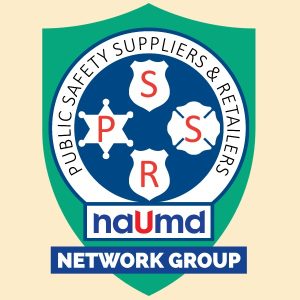Uniforms, whether for public safety, medical, industrial or corporate, strengthen the structures of organizations today. Workplace uniforms are associated with enhancing brand awareness, but they of course go beyond this. The uniforms establish and support a business image, prevent cross-contamination between workers and their environment, build a team spirit, and improve client relationships.
While the pandemic has created uncertainty in many sectors, the uniform industry has a bright outlook. According to the U.S. Bureau of Labor Statistics, the future looks quite promising in some of the largest employment categories that wear uniforms.
Below are a few statistics on the projected employment increments in some of the largest USA uniform segments:
Law enforcement
Jobs for law enforcement officers are projected to grow by 7% from 2020-2030. In this decade, there will be about 67100 job openings on average annually for detectives and police officers. Most of the openings will arise from a need to replace those who will exit the labor market, usually through retirement, and the ones that will transfer to other occupations. Even if the crime rates in different locations fall, the increased demand for law enforcement officers to maintain public safety will continue.
The uniform for law enforcement officers has changed over time to suit the demands of their jobs. One of the latest advances is integrating body armor into the uniform. The body armor includes radio mic clips, wired earpiece buttonholes, hidden storage pockets, and body camera loops. This trend is meant to boost an officer’s comfort while maintaining a clean look and keeping crucial equipment within easy reach.
Transportation
Uniformed personnel in the transportation sector include flight attendants, passenger vehicle drivers, material movers, railroad workers, air traffic controllers, delivery truck drivers, and water transportation workers. Between 2020 and 2030, employment in the transportation industry is expected to grow at 9% on average and add approximately 1.1 million jobs. This is hardly surprising since the economy now depends on truck drivers to deliver the millions of goods purchased in online stores and keeps the supply chain moving.
Most jobs in the transportation sector are physically demanding and require personnel to be as agile as possible. This has seen a shift by uniform suppliers to the use of breathable, lightweight, and moisture-resistant materials that keep users cool even in sweltering temperatures. Most uniforms also include reflective strips or shields that keep a wearer visible when working in low light conditions, which is usually the case for railroad workers and air traffic controllers.
Food service
The food service sector includes workers who prepare and take your orders, clear tables and handle other tasks associated with providing clients with food and drink. They mainly work in schools and restaurants. From 2020-2030, jobs in the food service sector are expected to grow by 17%, much faster than other job categories. Annually, experts project an average of 1,032,100 openings in the industry.
Most of the jobs will result from people exiting the job market and a need to replace those who transfer to other occupations. The jobs will also follow the recovery from the shutdown occasioned covid-19 as more people start dining out, having food deliveries, and purchasing take-out meals. In the food service sector, the uniforms comprise headgear to protect the food from contamination, shirts, pants or skirts, and sometimes an apron for those who enter the kitchen.
Healthcare
The recent covid-19 pandemic has taken a huge toll on the healthcare sector, so employment is expected to grow in it. The aging population is also likely to lead to a higher demand for healthcare workers as it increases the need for services. From 2020-2030, the projected growth is an average of 16% translating to about 2.6 million openings.
The main aim of uniforms in the healthcare sector is to prevent the spread of diseases while protecting the wearer and patients. This necessitates the use of fabric that is easy to keep clean and does not easily pick contaminants. Polyester, cotton, rayon, and spandex are the common materials for medical scrubs. Some uniform manufacturers are also using antimicrobial finishes for their products. These are attached to the fabric to kill bacteria by keeping them as close to the fabric as possible or having a slow-release mechanism that releases ions, killing the bacteria on the fabric.
From the information above, the outlook for the uniform industry growing its user base appears positive.



















